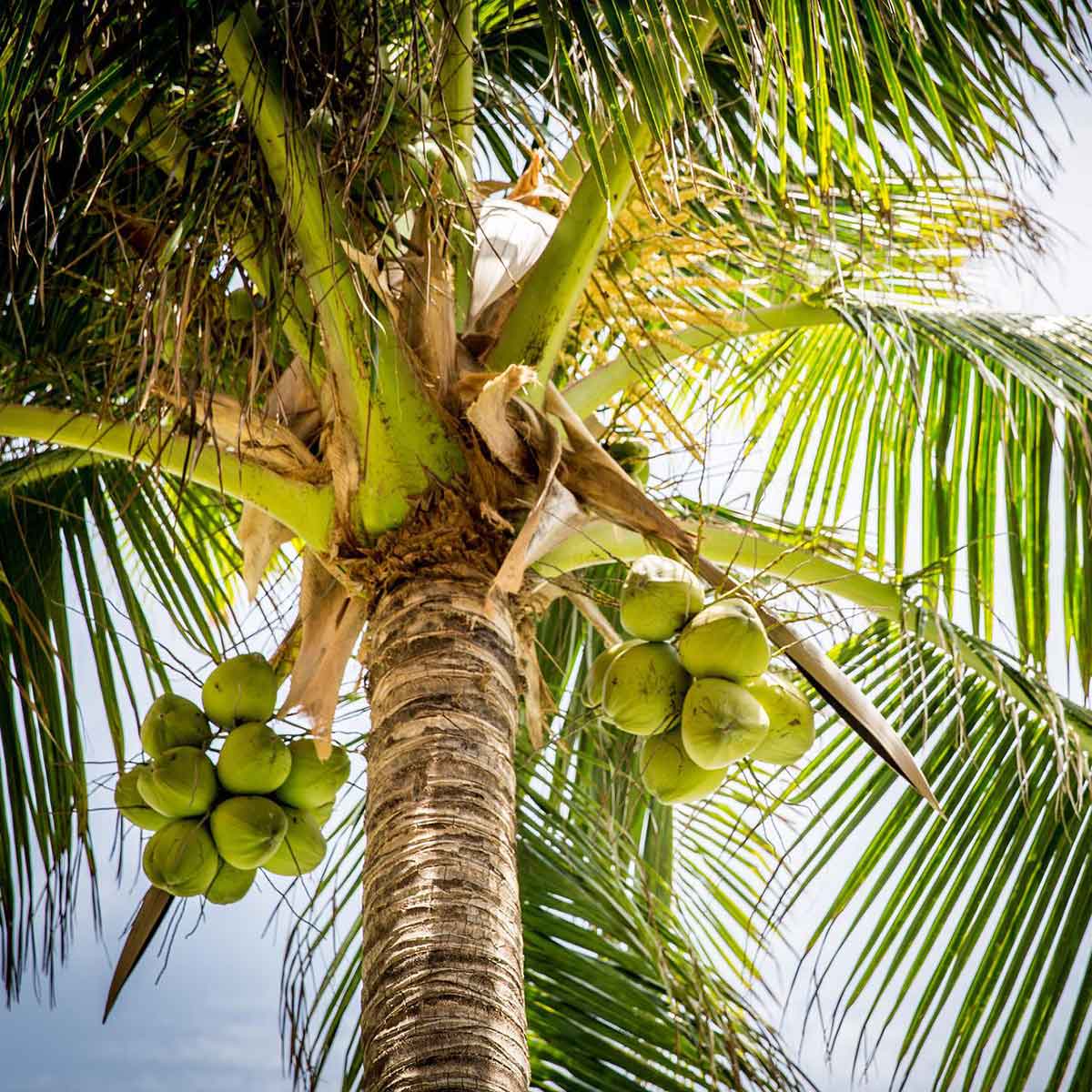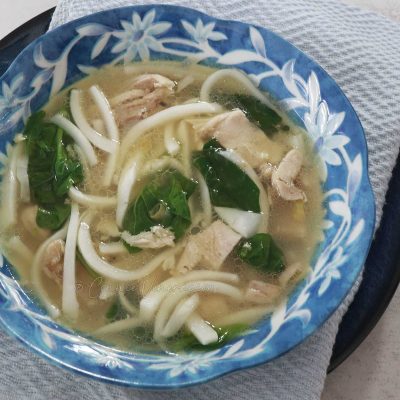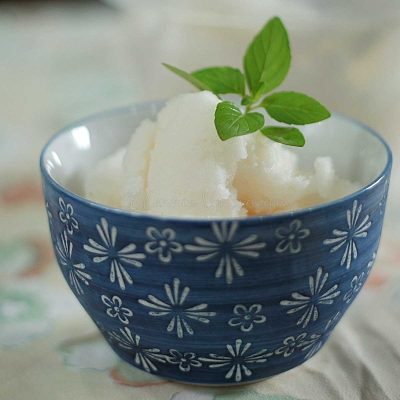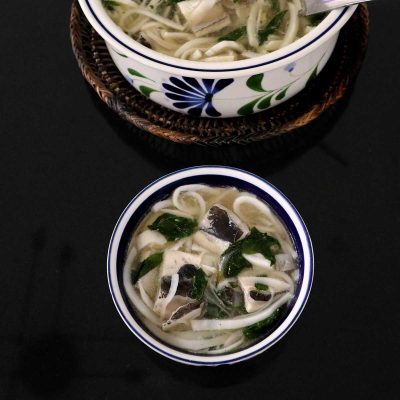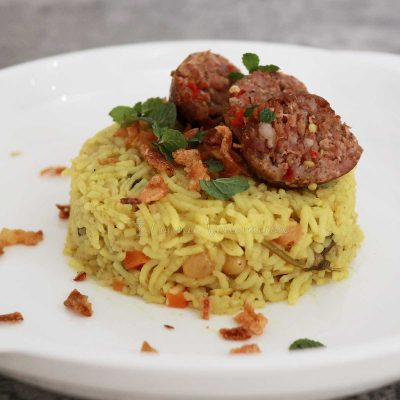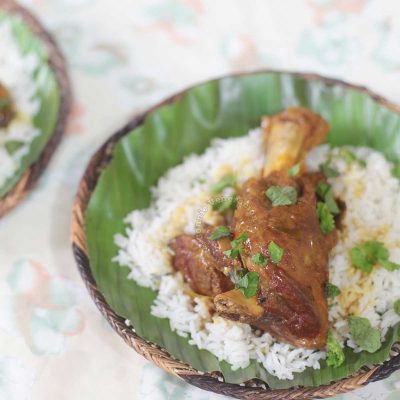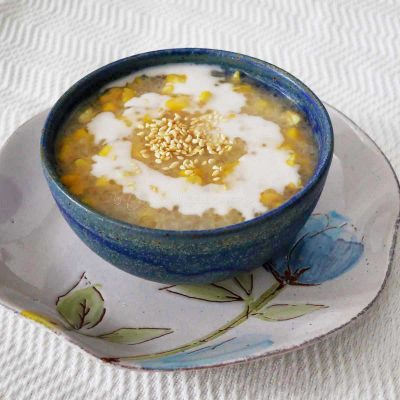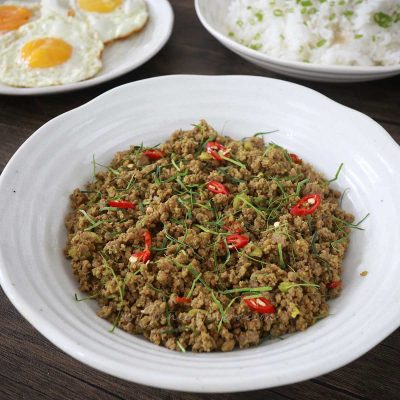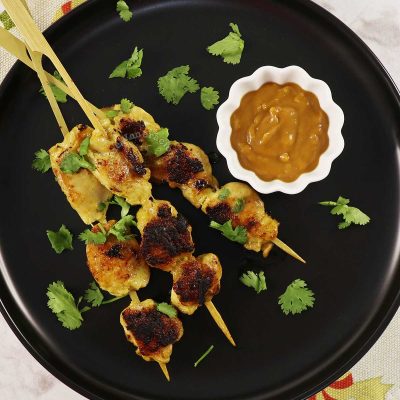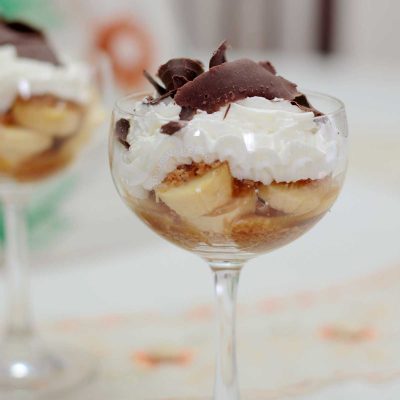I grew up with coconuts in the backyard quite literally. My grandmother grew coconut trees. I drank the juice and ate the flesh from the fruits that those coconut trees bore. My own daughters’ first taste of coconut water and flesh came from those trees too. And I’ve been cooking with coconut milk for as long as I’ve been cooking. And that’s a really long time. So, yes, I’ve learned a lot about coconuts over the years.
The coconut belongs to the family of palm trees. The term “coconut” itself is used to refer to the tree or the fruit. The fruit isa drupe, not a nut.
Just like any fruit, the coconut goes through various stages of development during its lifespan. The husk is a bright green when the coconut is young and, as it ages, it turns brownish. The flesh inside differs in texture depending on the age of the fruit. The flavor of the water, or what we call coconut juice, also varies with the age of the fruit.
Very young coconut
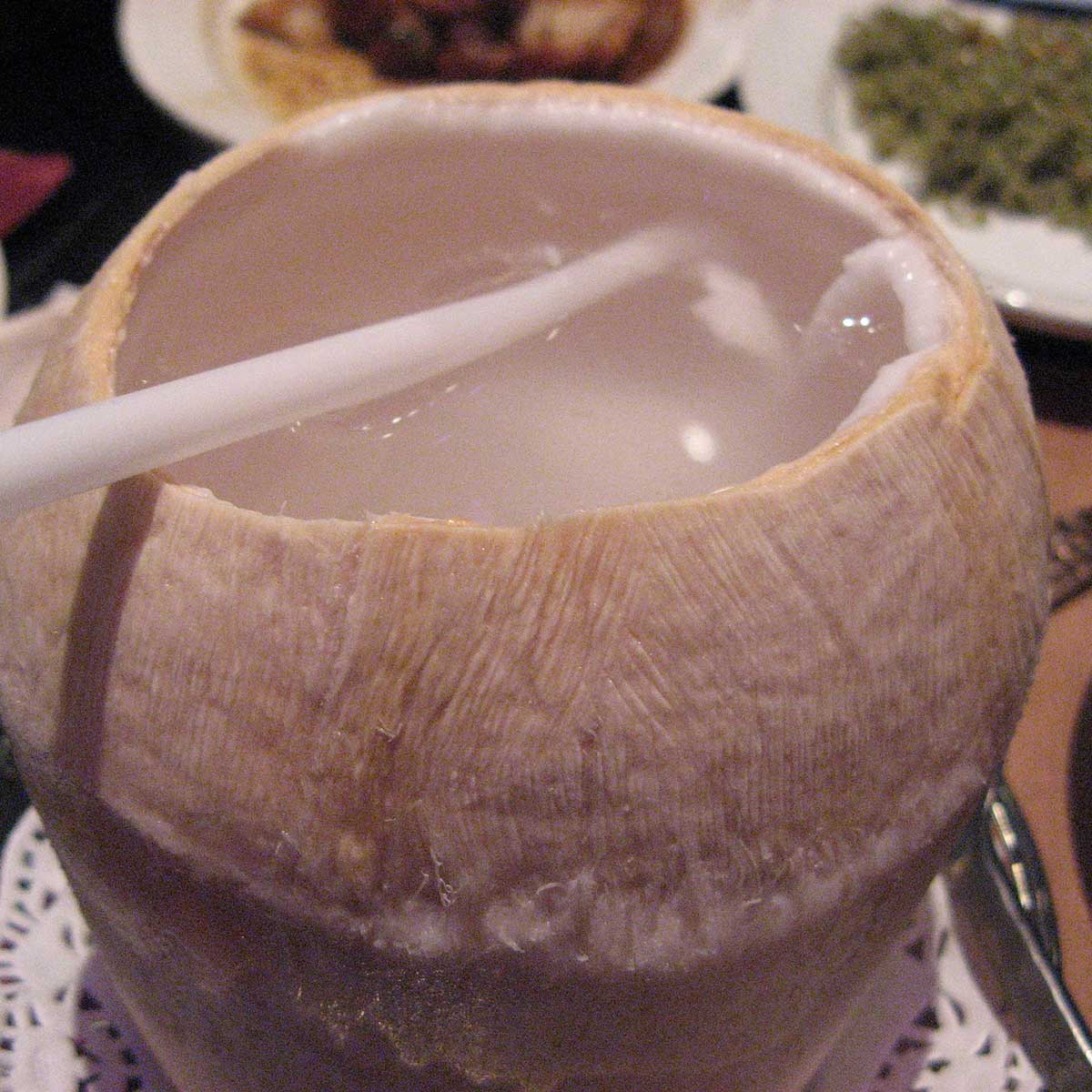
The very young coconut above with its thin, translucent flesh (or meat as it is sometimes referred to) — so thin and translucent that the husk shows through — is best scooped from the husk and eaten directly or stirred with the coconut water for a refreshing drink. At this stage, coconut flesh is soft and gelatinous, and the water is naturally sweet.
Young coconut
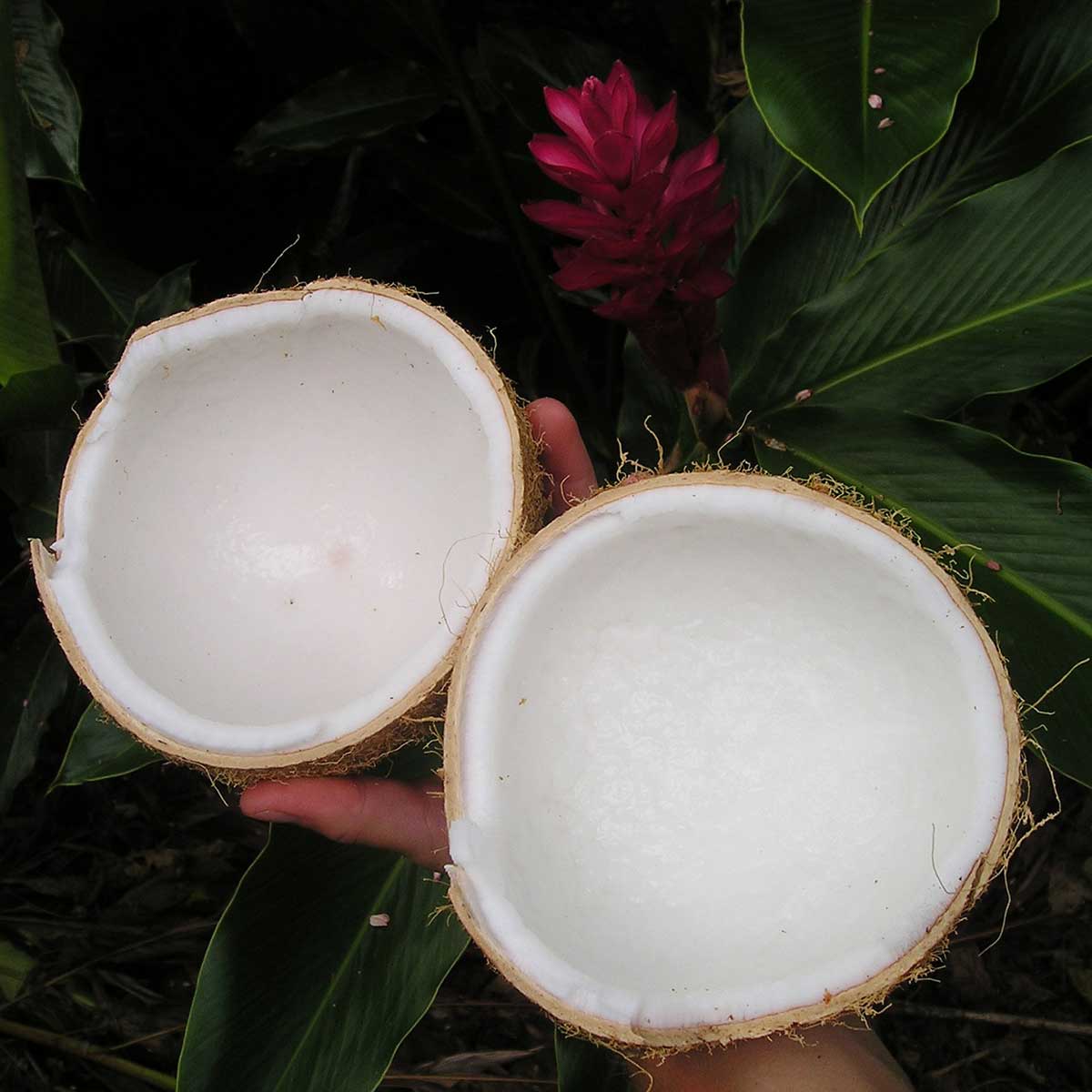
The meat of the coconut above is thicker but still tender enough to be scooped with a spoon and eaten from the husk.This is the texture that’s best for cooking or making sorbet and ice cream.
Recipes with coconut flesh and water
Mature coconut
As the coconut matures, the meat thickens and toughens — too tough to be eaten directly from the husk. The water turns nasty and can no longer be drank.
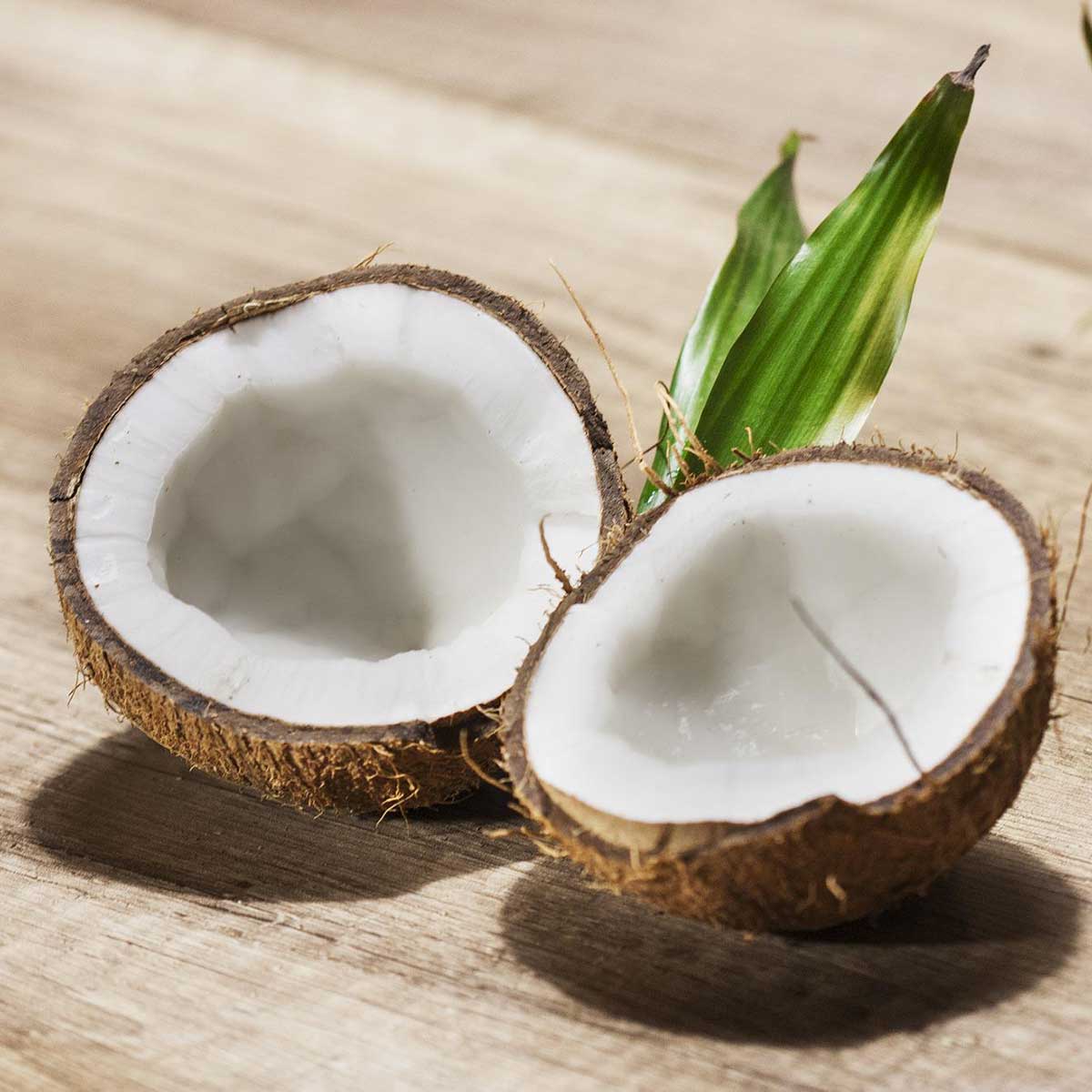
The meat of mature coconut is grated. In that form, it can be cooked or squeezed to extract coconut milk.
How to extract coconut milk
Coconut milk is an ingredient of many Southeast Asian dishes — from marinades to stews to desserts. To make coconut milk from scratch, you need grated mature coconuts.
Place the grated coconut at the center of a large square of muslin or cheesecloth. Gather the corners together and tie to form a bag. Position the bag over a bowl and press the bulging portion that contains the grated coconut with your hands to expel the milk directly into the bowl.
How to make coconut cream
Place the coconut milk in a bowl and cover loosely with a piece of muslin or cheesecloth, making sure that the fabric does not touch the surface of the milk. Put in the fridge and leave for several hours or overnight.
The cream will float to the top leaving the water underneath. Scoop out the cream and discard the water. Use coconut cream as you would dairy cream. It has become a popular substitute for keto dieters.
Substitutes for fresh coconut
There are parts of the world where coconuts don’t grow. Coconuts like hot climate. So, in regions where there are harsh winters, you won’t find coconuts growing anywhere. If you live in a place where coconut does not grow, how can you enjoy coconut?
There’s desiccated coconut and coconut flakes. You can cook with them and bake with them but, unfortunately, they won’t give you the fresh coconut experience.
As for coconut milk and cream, they are available in canned and powdered form.
Coconut water is now sold in cartons and bottles, and they’re exported globally by coconut producing regions.

